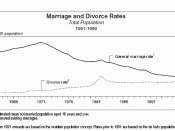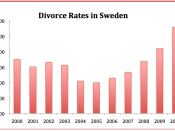This paper presents a study about how relationship changes with their fathers that were examined 20 years after their parents divorced. The data was drawn from 173 adult children who were interviewed about the perception of their parents divorce and its long-term impact. The findings indicate that most adult children felt that their relationships with their fathers had either improved or remained stable over time. Custody issues did not directly affect changes in the quality of the relationship with their fathers; however, increased inter-parental conflict, early father remarriage, and low father involvement in the early post-divorce years were associated with declining relationships over time. Those who reported a declining relationship with their fathers also reported a severe impact on the quality of their relationship with stepmothers, stepsiblings, and paternal grandparents.
Recent studies dealing with long-term consequences of divorce generally find that if parents divorce during childhood (3-8) years it weakens the emotional bond between child and parents in later life (Ahrons & Tanner 2003).
This is particularly true for adult children with their non-resident fathers. However, the general view of all the studies conclude that children benefit from continued relationships with their fathers, except when fathers are incompetent or abusive. In the past 40 years, considerable attention has been given to the importance of maintaining father-child relationships post-divorce; however, little is known about how all adult-children feel about their relationships with their fathers many years after parental divorce (Ahrons & Miller, 1993). How fathers maintain a relationship with their children is dependant on the interaction and several complex factors. For example, such factors include the father's relationship with each child during the marriage; the premarital and post-marital relationship of the parents; the living arrangements after separation; the time spent with each child; also the child's age, gender, temperament, birth order,


